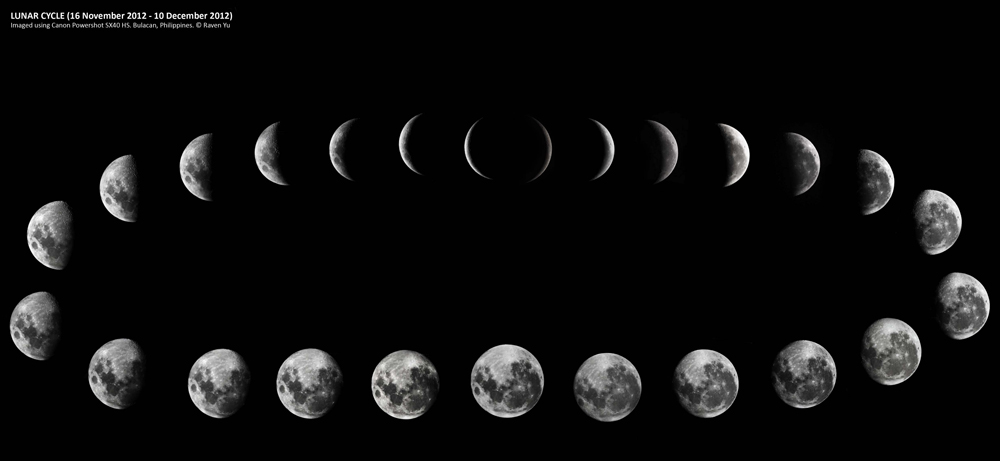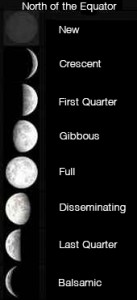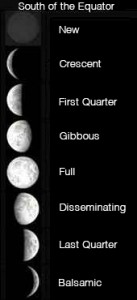Lunar Cycles
 Lunar Cycle Montage © Raven Yu
Lunar Cycle Montage © Raven Yu
The Moon, in its 29.6-day cycle through the zodiac spends approximately 2.5 days in Each of the 12 signs of the zodiac.
The next time you pause to look at the moon, consider its changing nature. Observe your personal moods and the pulse of the public as the moon moves through its monthly cycle. The lunation cycle mirrors our daily experience of living. Each lunar cycle is about our personal response to collective needs. Giving attention to and working with the moon phases helps to tune into a natural manifestation cycle that affects everyone at the same time.
Gardeners, hunters, and fishermen have planned their activities by the moon for centuries. Science agrees the moon governs the action of tides and continues to affirm the correlation of lunar cycles with plant and animal behavior. See the links to news articles citing the most recent discoveries.
The 8-Phases
Most people are aware of the 4 quarters of the lunar cycle. They are noted on calendars and in newspapers. But this is only half the story. There are 4 other phases that lie between the 4 quarters shown on most calendars, giving us a total of 8. With a little attention, the eight phases are identifiable by sight. Note how they appear reversed in the Southern Hemisphere.
The function of each phase in a cycle is to support the next stage, on through to the end so that the cycle can begin again and continue moving forward. Although this page is about the 8 phases lunar cycle, the 8 phase meanings can be applied to any cycle. Symbolically, the number 8 represents manifestation, form, and physical reality. See the 8 phases of the Solar Cycle.
The first four phases make up the waxing or growing half of the cycle when the energy is building. The last four phases make up the waning or ending half of the cycle when the energy is released. This ongoing appearance, growth, decline, and disappearance represent the ‘eternal return’.
The type of energy functioning in each of the phases alternates between active (yang) and receptive (yin), much like breathing is a two-step process — the breath is inhaled, then it is exhaled. The active phases are straight forward; choices are made and direction is initiated in the external world. These are the formative phases, which define the outcome of the cycle. The receptive phases are complex; information is gathered both from the consequences of previous activity and in anticipation of future activity. These are the mutable phases where changes occur internally and adjusting action is planned.


